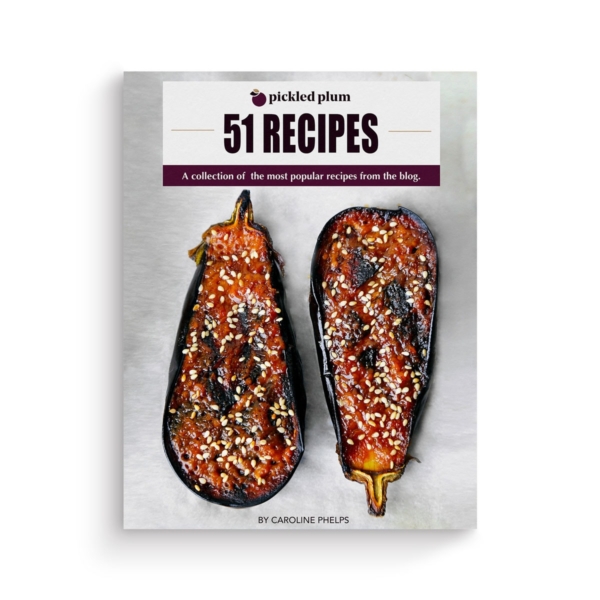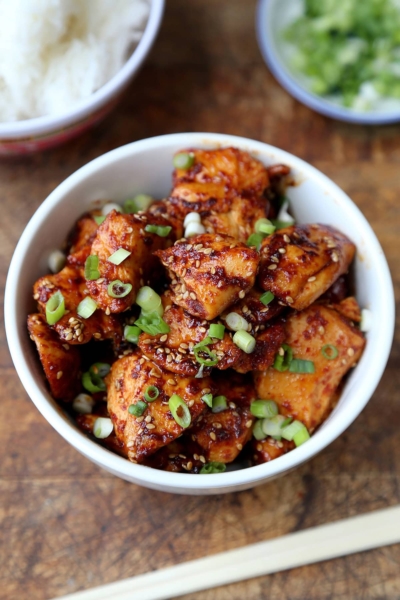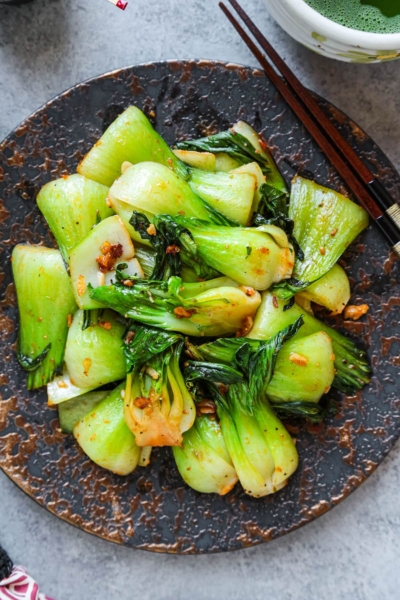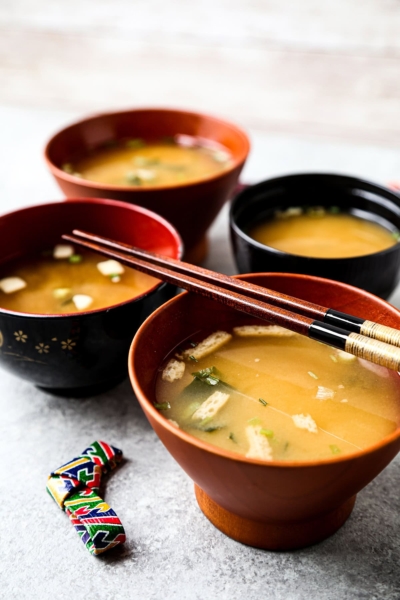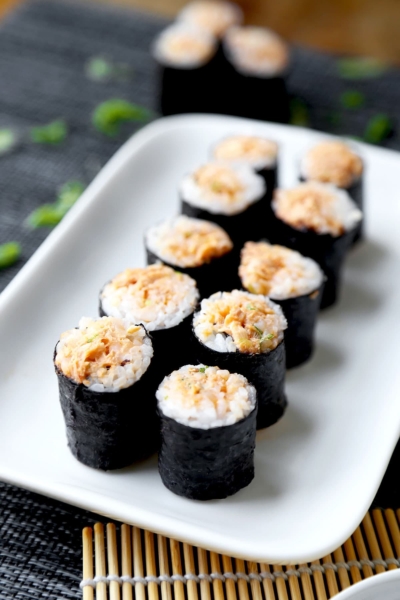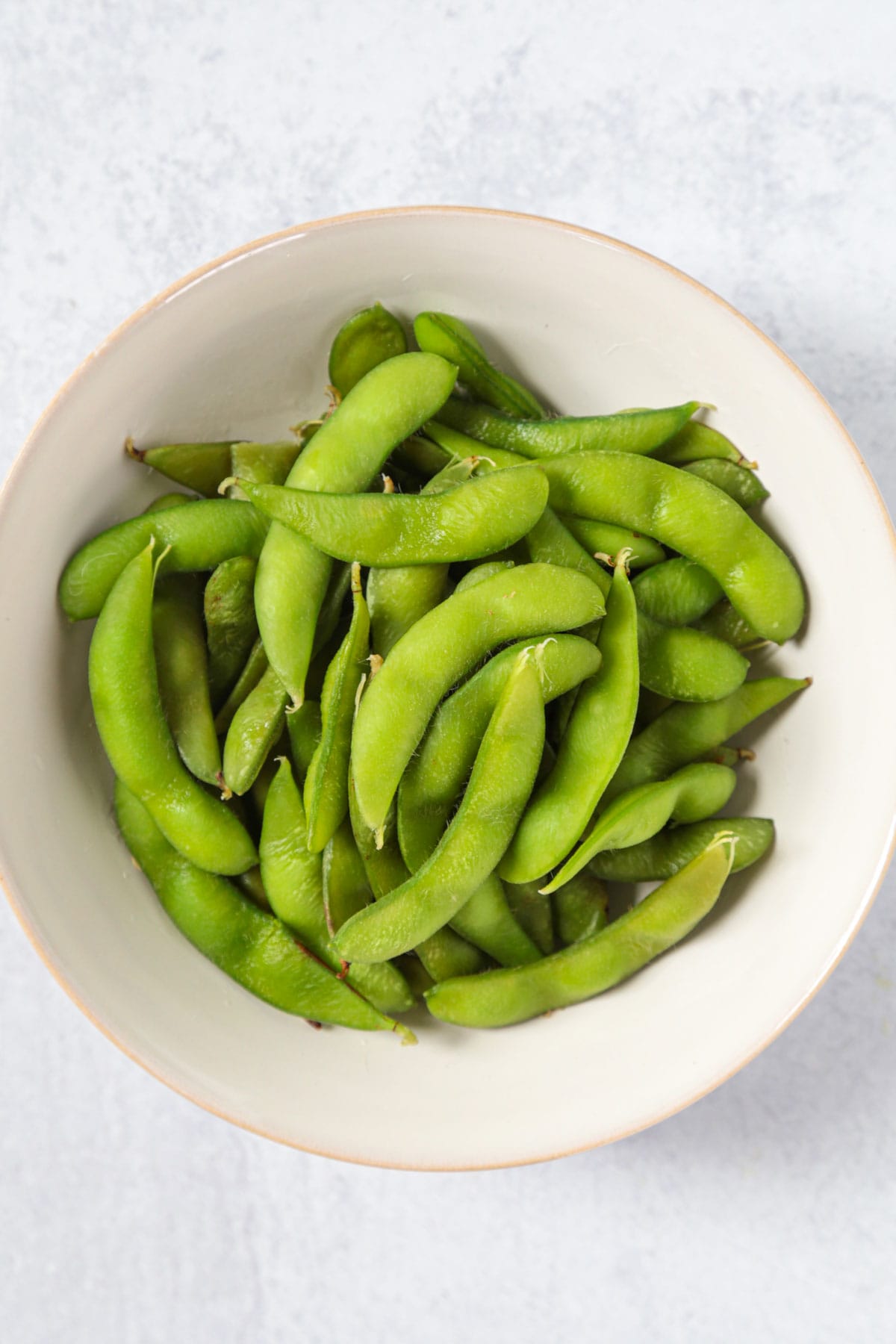
For many of us, edamame is a popular appetizer of colorful green beans tucked away in fuzzy pods, sprinkled with salt, and served as a side dish in sushi restaurants and Japanese pubs. Sucking on the salty bean pods while taking a swig from my favorite lager or lemon sour is something I learned to do (and still love to do) over two decade ago, when I lived in Tokyo.
What seems like just a regular bean is actually a powerhouse of nutrients. And the fact that they are so easy to cook with and taste so good makes them an easy ingredient to add to soups, stir fries, even smoothies!
Table of contents
What is Edamame?
Edamame are young soybean pods that have been harvested before the beans inside have had a chance to harden. They are commonly used in Japanese, Korean, and Chinese cuisines, and have recently become a popular ingredient in Western cuisine. The most popular way of eating edamame is to suck on a pod to get the beans out. The pod is inedible and therefore discarded afterward.
Edamame is a complete source of dietary protein and contains no cholesterol. It can be found in the frozen section of most Western and Asian groceries stores, with and without the pods. Sometimes fresh edamame can be found in the produce section but that’s not a very common occurrence, even in Japan.
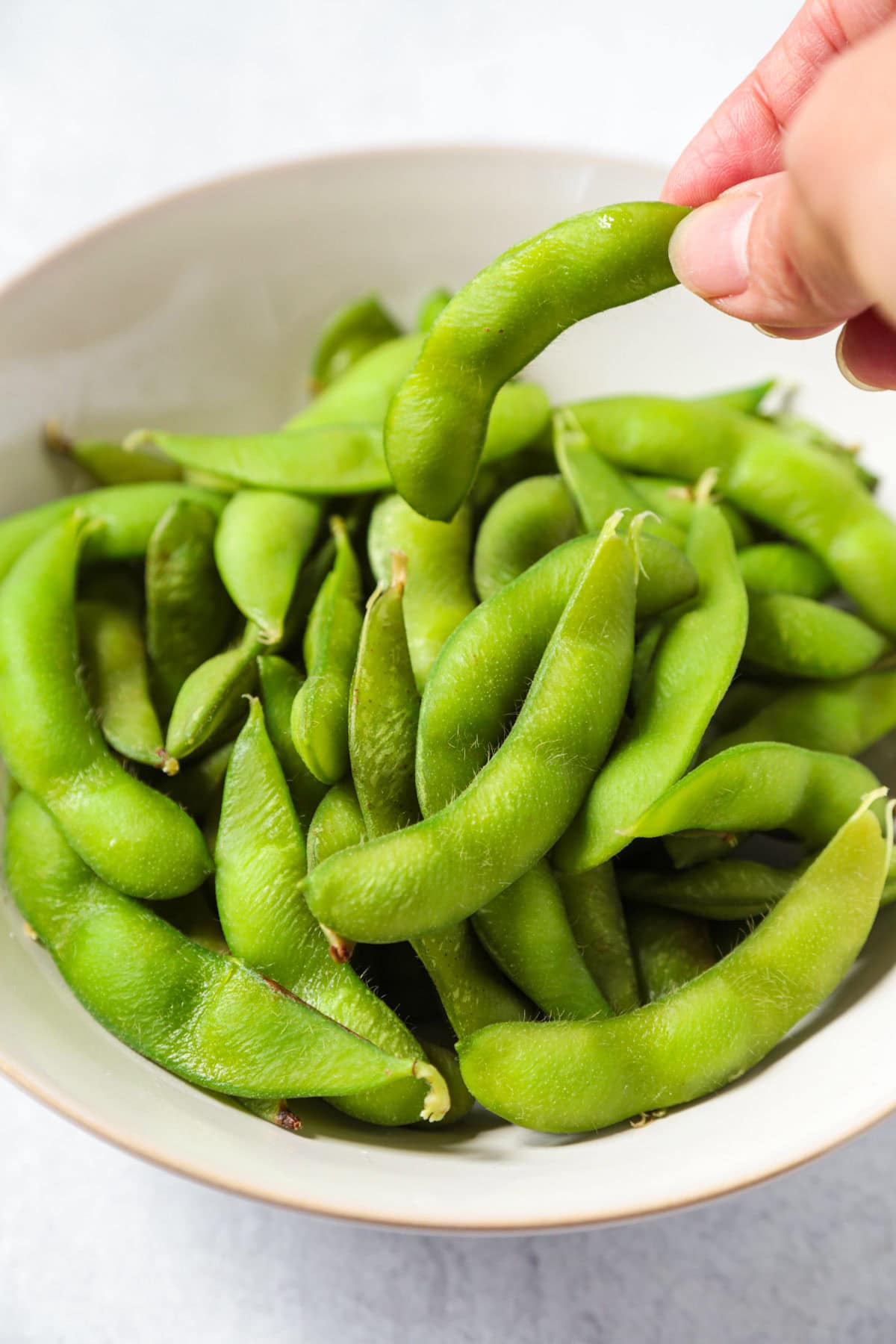
Is It Healthy?
You bet it is! To give you an idea, just half a cup of edamame yields 9 grams of fiber. That’s about what you would get from 4 slices of whole wheat bread. Edamame also contains about 10% of your daily value of vitamins A and C, and 11 grams of protein.
The beans are also high in iron. From the same half a cup you get the same amount of iron you would get from eating a 4-ounce chicken breast. Consuming soy protein instead of animal protein also lowers LDL (the bad cholesterol) which decreases the risk of high-blood pressure and atherosclerosis. These are just a few examples of how good edamame can be for you.
The Best Way To Cook Edamame
The most common ways to cook edamame pods is by microwaving, boiling, steaming, or sauteing them. If the edamame is frozen, oftentimes there is no cooking required. Many Japanese brands simply require you to dump the pods in a strainer and rinse them under warm water for about 5 minutes. At that point the edamame pods are ready to eat. For US frozen packages, the instructions usually include a microwaving option and a boiling option.
I used to boil edamame pods until I discovered that rinsing them under warm water was a much better option. The reason being that the pods remain whole and don’t overcook. Boiling also works but I find that the beans often come out of their pods. The same thing happens when I microwave them.
If you ask me, rinsing the pods under warm water for a few minutes is the best way to cook them since they have been already blanched at a high temperature before being packaged, which makes them safe to eat.

Best Ways To Eat Edamame
As far as eating them, there are various delectable ways to enjoy this bright green legume. In theirs pods they can be served the classic way with just a sprinkle of salt, or seasoned with ingredients such as lemon juice, soy sauce, spicy chili crisp, oyster sauce, and sriracha sauce. My favorite way to enjoy them is to pan fry them with a little sesame oil first so they absorb the nutty flavor of the oil and get a slightly charred exterior. I then add a little soy sauce or some other savory condiment.
Edamame pods recipes:
- Edamame with soy and sesame sauce
- Edamame with spicy garlic sauce
- Edamame with sriracha buffalo sauce
- Edamame with bonito and seaweed
Without their pods edamame beans can be used for just about anything! They can be added to salads, fried rice, stir fries, pasta dishes, soups, stews, and even added to desserts.
Edamame beans recipes:
- Edamame bean soup
- Edamame vichyssoise
- Edamame quinoa salad
- Edamame hummus
- Crustless edamame quiche
- Tofu edamame patties
Storage
Boiled or cooked edamame: Keep them in a storage container and refrigerate for up 5 days.
Frozen edamame: If the bag hasn’t been open, frozen edamame can keep for a very long time. I suggest looking at the ‘use-by’ date to enjoy them at their best since the quality will eventually degrade.
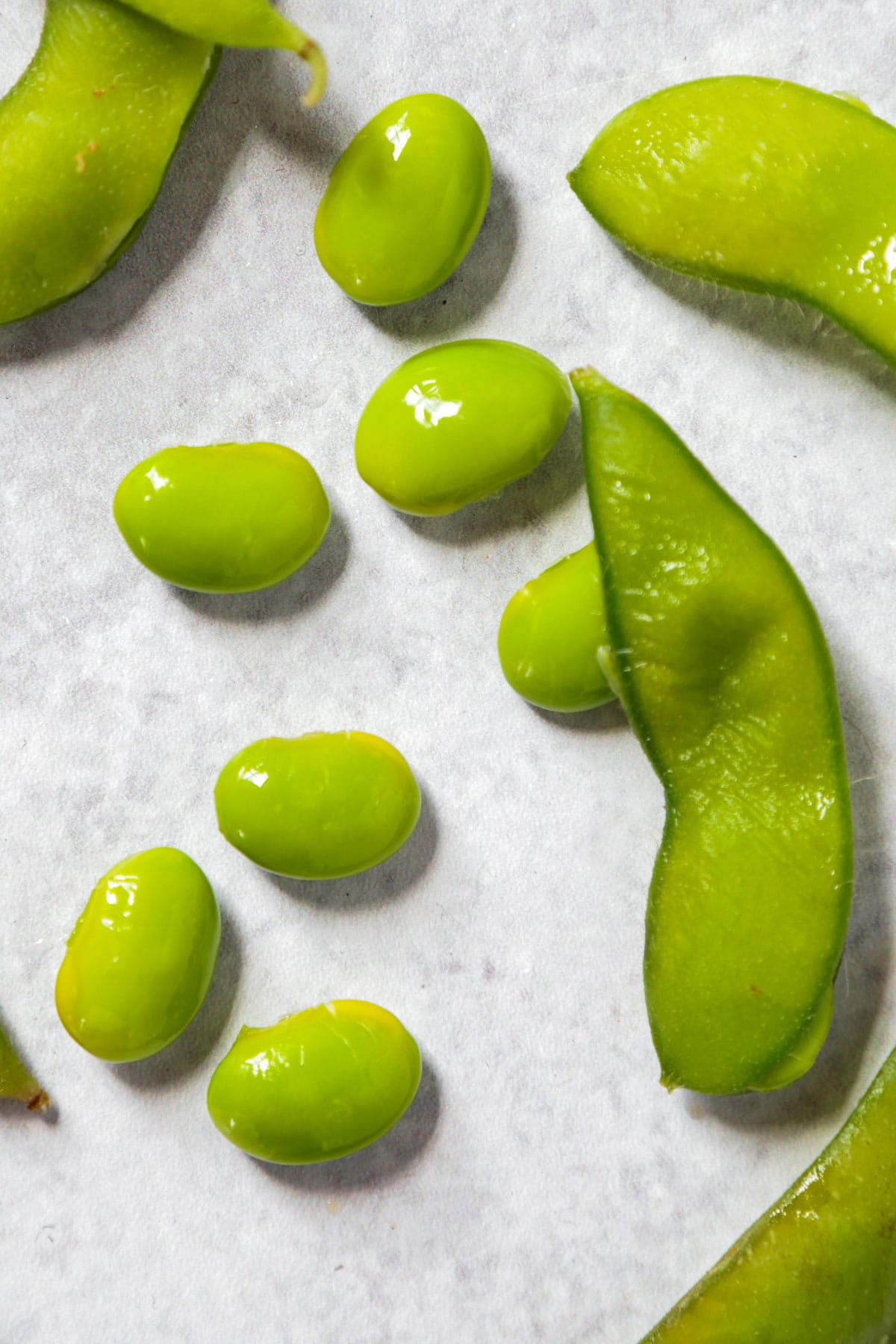
What To Serve With
When edamame pods are served as a side, I like to stick the classic Japanese combinations. There is no need to be creative here since the classic noodle soup, nigiri sushi, and other traditional Japanese dishes work perfectly well as a combo to these bright green pods.
Some of my favorite dishes to pair with them are:
Frequently Asked Questions
Yes, edamame is 100% gluten-free.
Yes they are. The only difference is that edamame are immature soybeans that have been picked before the beans become hard.
Yes you can but it won’t be a pleasurable experience since the pods are tough and fibrous. Squeezing the beans out of the pods are the best and most delicious way to enjoy edamame.
Yes, edamame is a complete protein because it contains all 9 essential amino acids. I often make a big bowl of them when I make a vegetarian or vegan meal. I find that it’s the quickest and easiest way to get my daily intake of complete protein.
